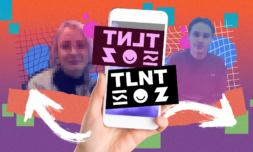With AR developers opting for Facebook and Snapchat as their go-to apps for creating effects, TikTok is set to completely overhaul its own creative features. Could this spell the beginning of the end for TikTok’s feeder platforms?
As TikTok moves to stop feeder AR softwares like Spark AR and Snap AR from profiting off its massive audience, one message is clear for the social giant’s 1 billion plus user base: keep your editing needs in house.
If you head to TikTok now and type AR into the search function, chances are you’ll see digital effects created using the likes of Snapchat or Facebook, with the final product being saved and uploaded to TikTok via a user’s camera roll.
That may not be the norm for much longer though.
Snapchat’s advantage in the AR game
On the flip side to TikTok’s meteoric climb – boasting the title of ‘most downloaded social app’ of 2021 – its vertical video predecessor Snapchat has steadily faded from the zeitgeist.
According to recent statistics, those who have persisted with the app are now using it in a very different way. As much as 75% claim to utilise Snapchat purely for its creative toolset and AR filters.
Embracing this change of direction as a creative feeder, Snapchat has rolled out a slew of editing features and updates over recent years including Spotlight, Voicey, and Story Studio, whilst largely snubbing its once popular social messaging aspect.
However, after a good few years of this mutually beneficial pecking order, it would appear TikTok is starting to resent other platforms riding off the coattails of its own success.
Rumblings in the industry suggest TikTok is now working to overhaul its own in-app AR features and artistic toolkits.
This way, it hopes to prevent creators from turning to competitors throughout any part of the TikTok experience in the future.




















